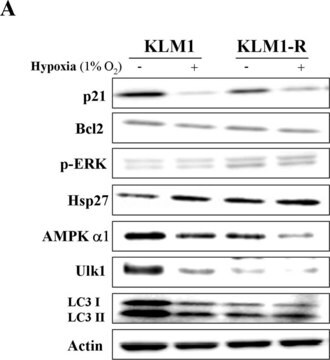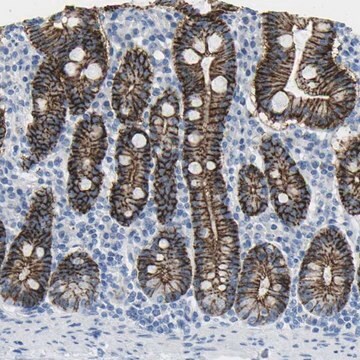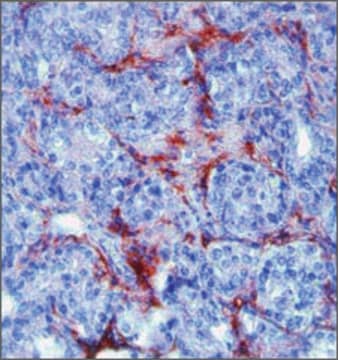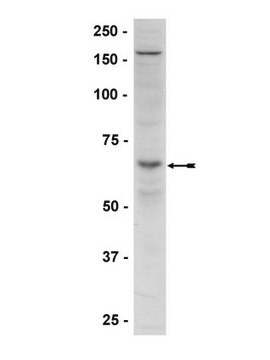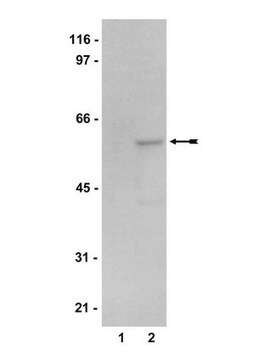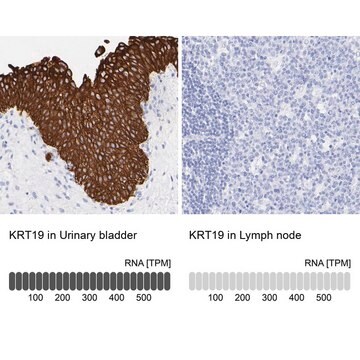ABS981
Anti-phospho-AMPK alpha-1 Antibody, (Thr479)
from rabbit, purified by affinity chromatography
Sinónimos:
5′-AMP-activated protein kinase catalytic subunit alpha-1, Thr479-phosphorylated, ACACA kinase, Thr479-phosphorylated, Acetyl-CoA carboxylase kinase, Thr479-phosphorylated, AMPK subunit alpha-1, Thr479-phosphorylated, AMPKa1, Thr479-phosphorylated, HMGCR
About This Item
Productos recomendados
origen biológico
rabbit
Nivel de calidad
forma del anticuerpo
affinity isolated antibody
tipo de anticuerpo
primary antibodies
clon
polyclonal
purificado por
affinity chromatography
reactividad de especies
human
reactividad de especies (predicha por homología)
bovine (based on 100% sequence homology), rat (based on 100% sequence homology), porcine (based on 100% sequence homology), horse (based on 100% sequence homology), mouse (based on 100% sequence homology)
técnicas
dot blot: suitable
western blot: suitable
Nº de acceso GenBank
Nº de acceso UniProt
Condiciones de envío
ambient
modificación del objetivo postraduccional
phosphorylation (pThr479)
Información sobre el gen
human ... PRKAA1(5562)
Descripción general
Especificidad
Inmunógeno
Aplicación
Signaling
Western Blotting Analysis: A 1:1000 dilution from a representative lot detected GSK3beta-catalyzed phosphorylation of E. coli expressed, catalytically inactive AMPK alpha-1 recombinant protein (Courtesy of Bruce Kemp, Ph.D., St. Vincent′s Institute of Medical Research in Melbourne).
Calidad
Dot Blot Analysis: A 1:1,000 dilution of this antibody detected 20-0.156 ng of immunogen peptide, but not the corresponding non-phosphorylated peptide.
Descripción de destino
Forma física
Almacenamiento y estabilidad
Otras notas
Información legal
Cláusula de descargo de responsabilidad
¿No encuentra el producto adecuado?
Pruebe nuestro Herramienta de selección de productos.
Código de clase de almacenamiento
12 - Non Combustible Liquids
Clase de riesgo para el agua (WGK)
WGK 1
Punto de inflamabilidad (°F)
Not applicable
Punto de inflamabilidad (°C)
Not applicable
Certificados de análisis (COA)
Busque Certificados de análisis (COA) introduciendo el número de lote del producto. Los números de lote se encuentran en la etiqueta del producto después de las palabras «Lot» o «Batch»
¿Ya tiene este producto?
Encuentre la documentación para los productos que ha comprado recientemente en la Biblioteca de documentos.
Nuestro equipo de científicos tiene experiencia en todas las áreas de investigación: Ciencias de la vida, Ciencia de los materiales, Síntesis química, Cromatografía, Analítica y muchas otras.
Póngase en contacto con el Servicio técnico


